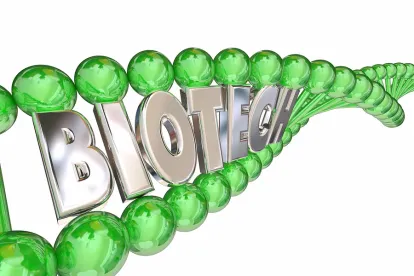In a case involving the right of priority to basic gene editing technology, the US Court of Appeals for the Federal Circuit affirmed a Patent Trial and Appeal Board (PTAB) decision that there was no interference-in-fact between the competing patent applications of two prestigious research institutions. Regents of the University of California v. Broad Institute, Inc., Case No. 17-1907 (Fed. Cir. Sept. 10, 2018) (Moore, J).
In 2012, the University of California (UC) first applied for a patent on using CRISPR (Clustered Regularly Interspaced Short Palindromic Repeats, a gene-editing technology that enables scientists to modify an organism’s DNA) in any cellular environment, based on its experiments with bacteria. Several months later, the Broad Institute (of MIT and Harvard) applied for patents on using CRISPR to edit DNA in eukaryotic cells. While UC’s application remained pending, 12 Broad Institute patents were granted and one application remained pending. The PTAB instituted an interference, and the Broad Institute moved to terminate, arguing that its involved claims were patentably distinct from UC’s claims because a person of ordinary skill in the art would not have had a reasonable expectation that the CRISPR-Cas9 system would work successfully in the genomes of a eukaryotic cell—a group of organisms that includes plant and animals.
The PTAB determined, and the Federal Circuit agreed, that both claimed inventions were separately patentable and did not interfere with each other. The PTAB found that using CRISPR in eukaryotic cells would not be obvious in view of UC’s claims, because a person of ordinary skill would not have a reasonable expectation of success using the CRISPR method with plant and animal cells.
A two-way test is used to determine whether claims are patentably distinct as required to support an interference proceeding. The PTAB must first determine whether “the subject matter of a claim of one party would, if prior art, have anticipated or rendered obvious the subject matter of a claim of the opposing party and vice versa.” If the two-way test is not met, no interference-in-fact exists. In this case, the PTAB determined there was no interference-in-fact.
The Federal Circuit reviewed the PTAB’s conclusion of obviousness in evaluating the interference-in-fact issue under the substantial evidence standard and concluded that substantial evidence supported the PTAB’s determination that there was a patentable distinction between the competing claims of the Broad Institute and UC insofar as the Institute’s claims would not have been obvious over UC’s claims. Based on the evidence in the record—e.g., expert testimony, contemporaneous publications, statements by the UC inventors acknowledging their own doubt and frustration, prior art failures—the Court determined that a person of ordinary skill in the art would not have had a reasonable expectation of success in applying the CRISPR-Cas9 system in a eukaryotic cell. The Court noted UC’s argument that there was sufficient evidence in the record to support the opposite conclusion, but noted: “[w]e are, however, an appellate body. We do not reweigh the evidence.”
The Federal Circuit rejected UC’s argument that the PTAB improperly applied a narrow test requiring specific instructions in the prior art to establish a reasonable likelihood of success (the predicate for obviousness). The Court concluded that the lack of a reasonable expectation of success finding was not predicated solely on the lack of specific instructions in the art describing how to apply CRISPR-Cas9 in eukaryotes. The Court explained that the PTAB “performed a thorough analysis of the factual evidence and considered a variety of statements by experts for both parties and the inventors, past failures and successes in the field, evidence of simultaneous invention, and the extent to which the art provided instructions for applying the CRISPR-Cas9 technology in a new environment.” The Federal Circuit stated, “[i]n light of this exhaustive analysis and on this record, we conclude that substantial evidence supports the Board’s finding that there was not a reasonable expectation of success, and the Board did not err in its determination that there is no interference-in-fact.”
The opinion concluded by emphasizing that the Court’s holding addresses only the scope of the application claim sets. “It is not a ruling on the validity of either set of claims.”
Practice Note: Although the America Invents Act changed the United States to a first-to-file country in March 2013, the first-to-invent system and the possibility of interference is still newsworthy almost six years later.
Since these competing applications were filed, researchers have discovered enzymes to replace Cas9 and have also modified the CRISPR-Cas9 to manipulate the genome in different ways. Although CRISPR-Cas9 is still often the preferred CRISPR variety, other systems may gain acceptance.



 />i
/>i

